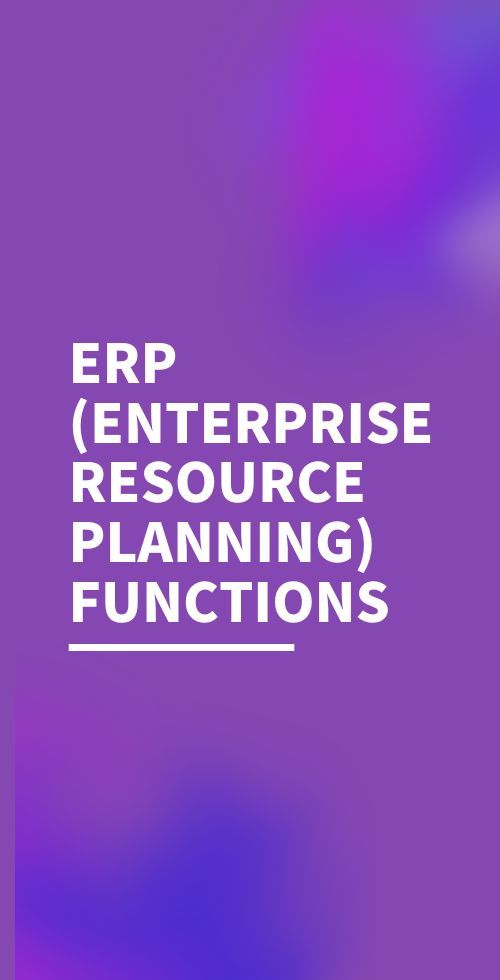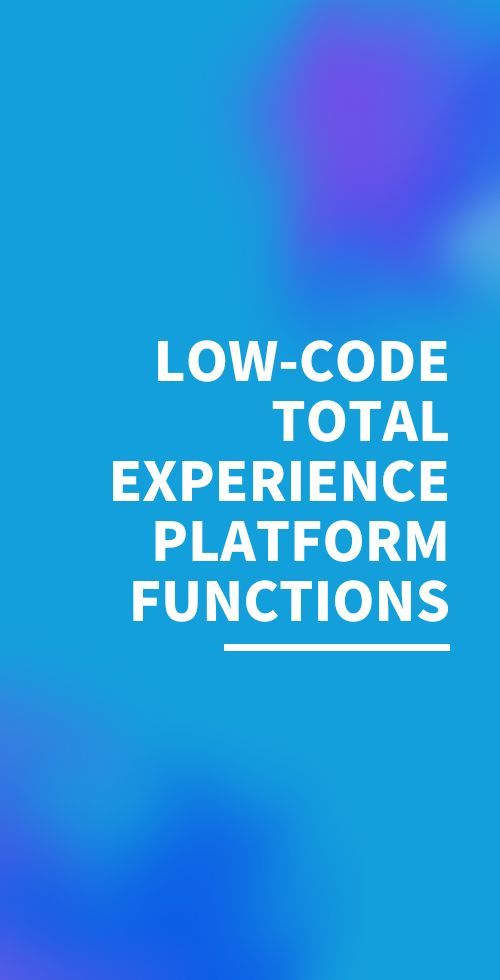Understanding the Key Differences Between ERP and Low-Code Total Experience Platforms
Making the Right Choice for Your Business
29 April 2024 , Explore the World of CloudOffix
Explore the distinct characteristics of these digital ecosystems to empower your business decision-making.
As companies advance through their digital transformation, it's crucial to grasp how various technologies integrate and enhance each other. This white paper delves into the unique and interconnected roles of Enterprise Resource Planning (ERP) systems and low-code Total Experience platforms. We will outline their individual features and show how they can work together to boost business operations. Our goal is to illustrate the importance of both systems within an integrated digital strategy, helping stakeholders make informed decisions about their technological investments.
Both systems play pivotal roles in a holistic business strategy. ERP systems manage the backbone of business operations, ensuring data accuracy and operational efficiency, while Total Experience Platforms bridge the gap to the customer, enhancing engagement and satisfaction. Together, they provide a robust foundation and dynamic front-end necessary for a comprehensive digital ecosystem.
Key Differences Between ERP and Low-Code Total Experience Platforms
ERP (Enterprise Resource Planning) systems are primarily designed to manage your company's back-office processes, such as financial activities and manufacturing planning.
In contrast, Low-Code Total Experience Platforms offer a more comprehensive digital ecosystem
These platforms focus on front-office processes, enabling you to oversee your entire business operations, from marketing to HR, through a single interface. This fundamental difference highlights how each system is tailored to specific organizational needs, from internal operations with ERP to customer-facing activities with Total Experience Platforms.
Functions and Focus of ERP vs. Low-Code Total Experience Platforms
ERP (Enterprise Resource Planning) Functions
ERP systems cover a range of back-office functions that support internal business operations but do not directly interact with customers or employees. These include:
Accounting and Finance: Streamlining financial operations such as ledgers, balance sheets, and tax management.
Payrolls: Managing employee compensation, including wages, benefits, and deductions.
Manufacturing Planning: Scheduling and coordinating production activities to optimize manufacturing processes.
Invoicing: Generating and managing bills and receipts for business transactions.
Warehouse Management: Organizing and controlling inventory storage and distribution.
Delivery and Transportation Management: Overseeing the logistics of transporting and delivering goods.
Production Management: Controlling and supervising production workflow to ensure efficiency.
ERP is characterized as a "monologue system," focusing primarily on processes that do not involve direct interaction with customers or employees.

Low-Code Total Experience Platform Functions
Total Experience Platforms, on the other hand, facilitate a wide range of front-office functions that directly interact with customers and employees. These functions are designed to enhance the user experience and include:
Sales and Marketing: Tools and features to boost sales outputs and marketing efforts.
HR Management: Managing employee records, recruitment, onboarding, and employee engagement.
Project Management: Planning, executing, and tracking project progress.
Collaboration: Enabling real-time communication and cooperation among team members.
E-Commerce: Supporting online sales, customer service, and digital commerce operations.
Help Desk: Providing customer support and help desk services to address inquiries and issues.
These platforms are described as "conversational and interactive digital ecosystems," emphasizing their role in facilitating direct interactions with users and improving the overall experience.

| Aspect | ERP (Enterprise Resource Planning) | Total Experience Platform |
| Functionality | Specialized in orchestrating internal back-office operations such as finance, HR, and supply chain management. | Dedicated to enhancing customer-facing front-office activities such as sales, HR, project management, and marketing. |
| Communication Style | Typically characterized by a one-directional 'Monologue,' where information flows from the system to the user. | Promotes interactive 'Dialogue,' fostering engagement between users and enabling seamless communication. |
| Primary Users | Predominantly employed by back-end teams including finance, HR administrators, and supply chain managers. | Extensively used by front-end teams like sales, HR, project management, IT, and marketing, with accessibility extended to all employees for HR functions. |
| Accessibility | Commonly on-premise with constraints on remote accessibility, often limited to within the organization's network. | Built for mobility with a responsive design for seamless use across various devices, facilitating access to information from anywhere. |
| Data Analysis | Offers comprehensive reporting tools for in-depth financial and operational data analysis, primarily focusing on internal metrics. | Enables real-time analytics to improve customer engagement and employee collaboration, focusing on both external and internal data. |
| Collaboration | Lacks collaboration or communication tools within the system, focusing primarily on internal data management. | Provides extensive features for collaboration and communication, integrating data about customers, employees, projects, and company knowledge, fostering collaboration across departments and enhancing overall productivity. |
Misconceptions and Complementarity of ERP and Total Experience Platforms
Companies may sometimes misconceive that Total Experience Platforms can substitute for ERP systems; however, this is not accurate. Both digital ecosystems serve distinctly different areas within an organization and are crucial for holistic business management.
Distinct Functions of ERP and Total Experience Platforms
ERP Systems: These are vital for integrating various back-office processes such as finance, HR, and inventory management, ensuring these operations are efficient and well-coordinated. The benefits of ERP systems extend beyond the immediate users in the ERP team to impact the entire organization by enhancing process integration and data accuracy.
Total Experience Platforms: These platforms focus on front-office functions, directly interacting with customers and employees. They are essential for managing customer relationships, sales, marketing, and providing support. Total Experience Platforms significantly enhance user interaction and satisfaction.
Strategic Benefits of Implementing Total Experience Platforms
Implementing a Total Experience platform can significantly reduce IT costs, typically achieving savings between 35% to 45%. This cost reduction stems mainly from the platform’s capability to streamline operations and decrease the need for multiple tools, cutting down expenses related to subscriptions, integrations, and customizations.
Maximize Efficiency with CloudOffix's Low-Code Total Experience Platform
CloudOffix's low-code Total Experience Platform streamlines every aspect of front office processes, from sales and CRM management to marketing automation, project management, and HR services including leave management, recruitment, talent management, and maintaining an employee database management.
A standout feature of CloudOffix is its ability to provide real-time data access to both customers and employees. This enables enhanced reporting and improved control over all customer and employee interactions, making it an invaluable tool for optimizing business operations.
CloudOffix's Low-Code Total Experience Platform is designed to enhance collaboration among employees and facilitate seamless communication with customers. Central to its functionality, CloudOffix offers an all-in-one solution that consolidates your entire business operations into a single platform.
Continually evolving, CloudOffix incorporates the latest technologies to ensure that your business remains at the forefront of innovation. It is recognized as one of the most agile and flexible platforms available, adapting to the ever-changing business landscape.
The platform efficiently manages end-to-end processes from sales, human resources, ticket management, to project management within a single application, and is capable of automating routine tasks across various departments.
Whether you are operating a mid-sized company or a large global organization with thousands of employees and multiple subsidiaries, CloudOffix simplifies business management. By saving time and reducing costs, it allows you to concentrate on the critical aspects of your business, leveraging your unique expertise for growth and success.
